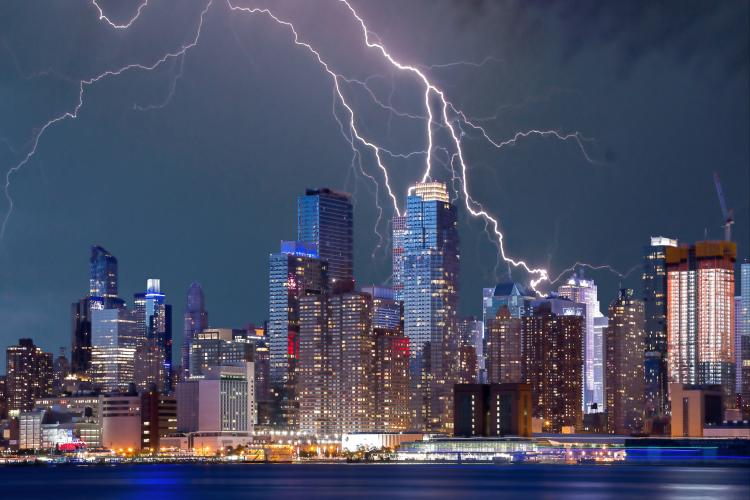
According to the Weather Channel, the Plains and Midwest states have had the most extreme and record-breaking weather of any region in 2019. From the polar vortex gripping the Midwest and setting at least 340 cold weather records in late January, to the deluge of snow in February, capped off by devastating flooding in March and two snowstorms in April, Midwesterners and the Midwest have had everything but the kitchen sink thrown at them!
Not only was everyday life disrupted, but for some Midwesterners, these weather events caused severe damage or the complete loss of homes and businesses. Events like these are tremendously costly and life altering, but there are state and local policies that can improve long term building resilience, ensuring new buildings, and even renovated existing buildings, are better equipped to withstand the extreme heat and cold, flooding, fires and other natural disasters.
In a recent op-ed published by The Hill, authors from FEMA and the International Code Council (ICC) correctly point to the model International Residential Code (IRC) and International Building Code (IBC) as comprehensive policies to address the pressing need for improved building resilience. As highlighted in the article, a recent study by the National Institute of Building Science (NIBS) estimates a return of “$11 for every $1 invested through earthquake, flood and wind mitigation benefits” of the 2018 IRC and IBC. Interestingly, this impressive ROI did not take into account the resilience and economic benefits of the International Energy Conservation Code (IECC), which is included as one of many chapters in the IRC and IBC. When factoring in energy codes to the full suite of building codes, the benefits are even greater.
How Energy Codes Improve Resilience
Unlike other chapters in the model codes (which separately address the structure, roof, electrical and plumbing systems, and other aspects of the building), the energy code focuses on a range of multi-disciplinary measures to ensure buildings are constructed with a minimum level of energy efficiency. Energy codes require a well-sealed and insulated building enclosure, efficient windows, efficient lighting, insulated hot water pipes, and a sealed and insulated HVAC system.
All of these requirements make the building more efficient--reducing the load on the grid and the cost to operate a building—but these measures also make buildings more resilient. In the face of a polar vortex, buildings constructed to the latest model energy code or better keep occupants in reasonable comfort and maintain safe indoor temperatures for longer. In places like Minnesota and Michigan, when utility demand was peaking, efficient, well-sealed envelopes helped families respond to the request from utilities to cut back their heating usage without compromising on safety or running the risk of a pipe freezing. If a storm was bad enough to result in a power outage, buildings constructed to newer energy codes enable occupants to shelter in place longer and either wait for the power to return or for daylight to move to safety.
Adopting the matching energy code is a critical component of gaining the full benefits of the IRC and IBC, helping to save lives and property when an extreme weather event occurs.
But How Do We Pay for It?
A question that’s often posed when discussing infrastructure policies is, “how do we pay for it?” Well, as The Hill article notes, no municipality can afford to miss an opportunity to update to the latest model building codes. Investment in measures that help mitigate damage from natural disasters more than pay for themselves. Add to that the continually compounding savings from an efficient energy code, and the economic benefits are even greater.
According to the US Department of Energy, residents in Midwest states that update their residential energy code from the 2009 IECC to the 2015 IECC or newer typically see a positive cashflow in less than 8 months and yield an economic return of around $6000 when factored into a 30-year mortgage.
Over the last decade, most states in the Midwest have recognized the value of energy codes by updating to a newer, more efficient code. In fact, on May 8th, Nebraska formally adopted the 2018 IECC without any weakening amendments, a dramatic improvement from a near decade old statewide energy code. Since 2009, building energy code updates in the Midwest have led to almost $2.5 billion in energy savings and prevented over 18 million tons of CO2e from entering the atmosphere, equivalent to powering 1.8 million homes for a year.
To improve building resilience across the US, the op-ed authors recommend Congress pass an infrastructure bill that ensures updated minimum code requirements are adopted in all jurisdictions. In order to cost-effectively maximize building resilience and local economic benefits and contribute to clean energy solutions, energy codes need to be part of these minimum requirements.